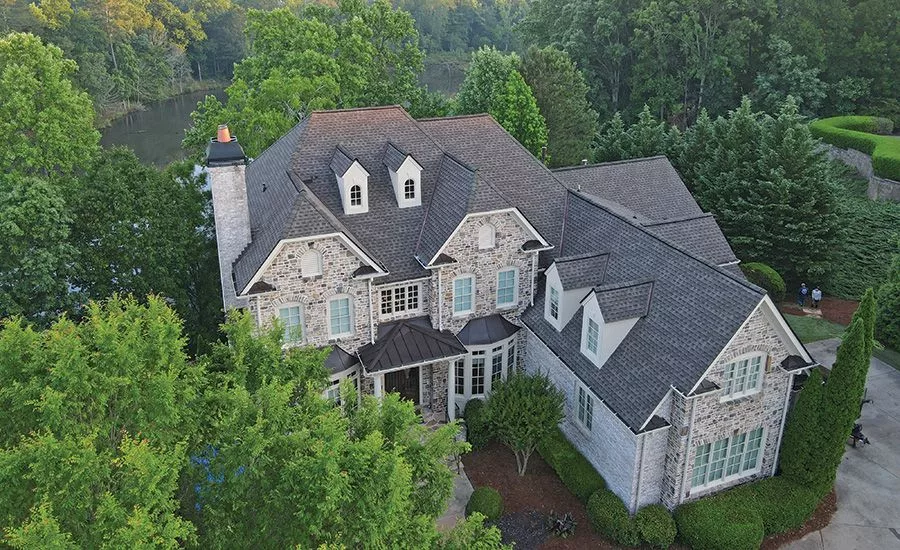Economic Indicators
Contractors See Modest Job Growth Despite Economic Strain
May brought modest job gains to construction, but trade policies and rising costs are casting a long shadow

Construction employment rose for the 13th straight month in May, but contractors warn that rising tariffs and tighter financing could slow future hiring and project starts.
— Image courtesy of Adobe Stock
Setting aside a flurry of pessimistic economic forecasts amidst tariff turmoil, the news last Friday from the Bureau of Labor Statistics regarding the state of the U.S. construction sector provided some relief to downbeat forecasters, as domestic construction added 4,000 jobs in May.
The BLS reported total industry employment rose to 8.3 million, marking the 13th consecutive month of hiring in nonresidential construction. Although the pace of hiring was modest compared to the same period a year earlier, these additions are welcome news for a sector that has been beset by uncertainty.
“It’s encouraging to see construction firms continue to add workers, but the rate of hiring has clearly moderated amid market uncertainty,” said Ken Simonson, chief economist at the Associated General Contractors of America.
“Nonresidential construction firms added employees in May for the 13th month in a row, yet constant changes in tariffs and other policies that are affecting the cost and demand for construction have led to a significant slowdown in hiring, he added.”
Simonson noted that headcount in the industry rose by 126,000 jobs, or 1.5%, over the past 12 months, outpacing the 1.1% growth in total nonfarm payroll employment. Yet last May’s year-over-year gain in construction was 2.8%, underscoring the sector’s recent deceleration.
Broader labor-market data underscore that the U.S. economy added just 139,000 nonfarm payroll jobs last month and held the unemployment rate steady at 4.2%, its narrowest range since mid-2024. Economists say the slower pace reflects businesses grappling with elevated borrowing costs and policy ambiguity.
“Uncertainty surrounding shifting tariff policies and government spending cuts has left many firms in limbo,” Reuters reported, noting that hiring gains were concentrated in health care and hospitality rather than goods-producing industries.
The Federal Reserve’s latest Beige Book painted a similar picture: most districts reported flat or declining activity as higher import duties and price pressures weighed on business sentiment and input costs.
Fed officials have flagged upside risks to inflation and indicated they are wary of cutting interest rates until they see more definitive signs of easing price pressures.

Tariff policy remains a central concern for contractors. On June 4, Section 232 duties on imported steel and aluminum were raised from 25% to 50%, the White House announced, doubling the levies originally imposed in 2018.
Those steel tariffs alone could add billions of dollars to project budgets over the next year, given that steel accounts for roughly 5% of material costs in nonresidential building.
Additionally, the administration’s broader “reciprocal tariffs” plan imposes a baseline 10% duty on nearly all imports, along with higher rates on specific trading partners and goods, including a 20% tariff on Chinese imports and 25% on autos and trucks.
Meanwhile, longstanding anti-dumping and countervailing duties totaling approximately 14.5% continue to apply to Canadian softwood lumber imports, and the Commerce Department is considering further levies under a new investigation into the lumber sector.
Higher material costs squeeze profit margins and could slow future hiring.
“Construction firms continue to hire and boost wages, but the pace of growth has slowed as demand for certain types of projects cools,” said Jeffrey D. Shoaf, AGC’s chief executive officer, calling on federal officials to provide “more certainty about tariffs, taxes and investment levels” to keep projects on track.
RELATED
Roofing Feels Port Pinch Despite Tariff Truce
Broad-Scale Trends
Steady construction employment supports GDP growth by underpinning residential and commercial investment, but higher borrowing costs — driven in part by Fed policy to restrain inflation — could temper future activity. Real residential construction spending fell 0.4% in April, the Commerce Department reported, signaling early signs of a housing market cooldown.
As well, inflation remains above the Fed’s 2% target, with the Producer Price Index for nonresidential construction inputs rising 1.3% year-over-year in April, according to the AGC, which noted many contractors are reluctant to lock in long-term projects amid volatile input prices, from steel and lumber to gypsum and copper.
Still, demand for infrastructure — driven by federal and state stimulus programs — continues to provide a partial offset. Public works projects, including upgrades to transportation and water systems, accounted for more than a quarter of nonresidential construction spending in the first quarter, according to an AGC-Sage survey. Firms expect to increase headcount once policy challenges ease, with 69% of survey respondents anticipating workforce gains through year-end.
Looking ahead, economists warn the Fed will likely hold rates steady through this summer, wary of derailing the nascent recovery in business investment.
At the same time, any further escalation in trade restrictions could amplify cost pressures, delaying projects and chilling hiring.
For now, the construction sector’s modest gain of 4,000 jobs in May reflects resilience but also the mounting challenges of policy uncertainty and tighter financing conditions.
Looking for a reprint of this article?
From high-res PDFs to custom plaques, order your copy today!








